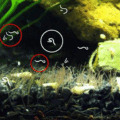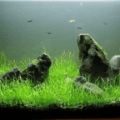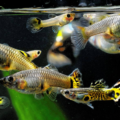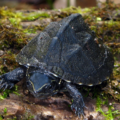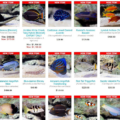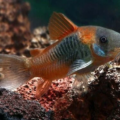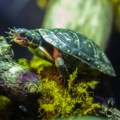Come find out the secrets behind the Loggerhead Musk Turtle’s unique features and the care requirements for successful maintenance in a home aquarium or pond.

Introduction
If you are a hobbiyists looking for a small, freshwater turtle specie that thrives in shallow waters and lives a reserved life you would love the Loggerhead Musk turtle. And this Loggerhead Musk Turtle profile will teach you the essential care needs for keeping this turtle as a pet.
Although it requires ordinary small freshwater turtle care, this pet has unique characteristics that are manageable by intermediate and expert aquarium keepers.
Keep reading this Sternotherus minor species guide for more info on
Author’s Note: Check out our post The 14 Types of Freshwater Turtles for even more great semi-aquatic pets!
Setting Up the Right Habitat for Sternotherus minor
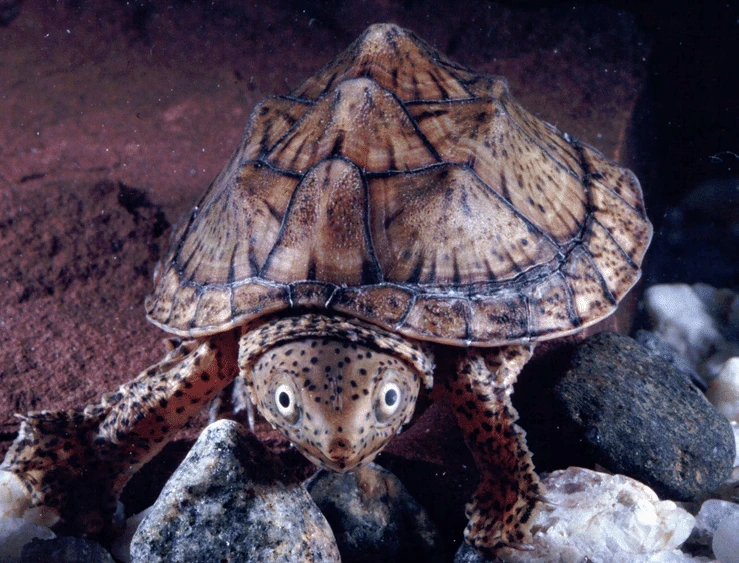
A Loggerhead Musk Turtle tank setup must contain the ideal tank size, water conditions, temperature, lighting, substrate, and decor requirements to accommodate the turtle’s bottom-dwelling and secretive lifestyle. Here’s how, up next!
Tank Size Requirements
A rectangular tank containing at least 20 gallons of water will comfortably house a single adult Loggerhead Musk Turtle.
Ensure there’s enough horizontal space for other tank essentials like basking platforms and hiding caves.
Water Conditions
Loggerhead Musks need a shallow-water turtle habitat with stable temperatures and a gentle flow.
| Water Temperature | 80°F |
| pH levels | 6.0 – 8.0 |
| Hardness | 180 – 200ppm |
Keep the water pristine using a high-quality filtration system with moderate current. For the best result, use a single or double-canister filter.
Author’s Note: Knowing Why your turtle tank water turns green? (Cause & Fixes) will be useful in the upkeep of your turtle’s enclosure.
Basking Platform & Lighting
Get a sturdy platform with an accessible ramp and wide basking area for your turtle. Add a UVB lighting bulb from 5.00 to 10.00% total energy output rating. Also, regulate the basking surface’s temperature between 85-90°F.
Substrate & Decor
Loggerhead Musk turtles are secretive and love to hide, so design their substrate with enough caves, live plants, and driftwood.
Use smooth gravel, small and rounded pebbles, or fine sand for the substrate. Decorate the tank with Mopani driftwood, Java fern, Amazon swords, and floating plants like Giant Duckweed. This is where your creativity shines as you get to design this tank however you see fit as long as you account for your turtle’s safety and needs. Here is a great example,

Let your curiousity shine!
You must also understand their personality and habits to provide the best Sternotherus minor aquarium care, up next.
Loggerhead vs Razorback Musk Turtle
It becomes hard at times to distinguish between the Loggerhead and Razorback turtles at a glance. As you can see above they both have very similar characteristics. Here’s how to tell them apart.
If they’re hatchlings, loggerheads will have three distinct keels on their back, whereas a razorback has one dorsal keel, which the scutes overlap each other. Adult Loggerheads tend to lose that pointed look, while Razorbacks (named for the shape of its shell) still maintain their point.
Logerheads typically reach 3-5 inches (~13.5cm) in length while Razorbacks can get to 6 inches(~16cm) in length. Loggerhead patterns are also a bit darker, more bold than the lighter markings on Razorback’s shells.
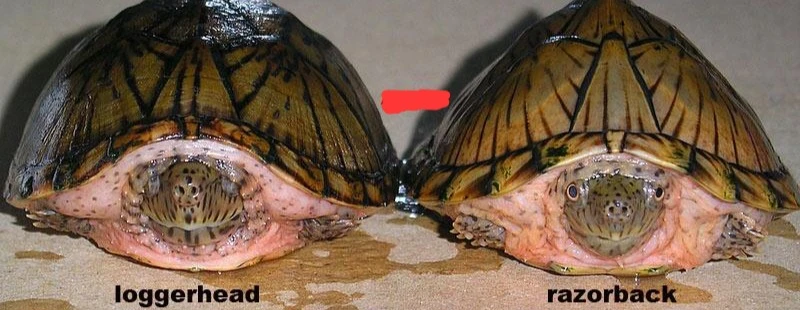
Recognizing the Behavior & Temperament of Loggerhead Musk Turtles
Loggerhead Musk are a bottom-dwelling turtle species that occasionally swim to the surface and bask. Building a suitable environment is the first step to managing their shy aquatic turtle traits.
You must also give them compatible tank mates and minimize your physical interactions with non-contact feeding.
Let’s discuss the species that are compatible with Sternotherus minor behavior traits, up next.
Compatible Companions: Can Loggerhead Musk Turtles Live with Others?
This Loggerhead Musk Turtle tank mate guide will help you choose a compatible species for these solitary and slightly aggressive pet turtles.
Best Companions
Choosing a compatible species for Sternotherus minor depends on factors such as tank size, species size, temperament, and feeding habits. Fast, mid-level fish like Chinese Algae Eaters and Rosy Barbs, similar-sized turtles like Mud Turtles, and Apple or Mystery Snails are top choices in large tanks. But in small to medium-sized tanks, keep them solitary.
Species to Avoid
Avoid aggressive fish, large turtles, and other musk turtles for turtle cohabitation safety unless you have a large enough tank with separate basking areas to avoid territoriality.
What to Feed a Loggerhead Musk Turtle: Diet Tips for Healthy Growth
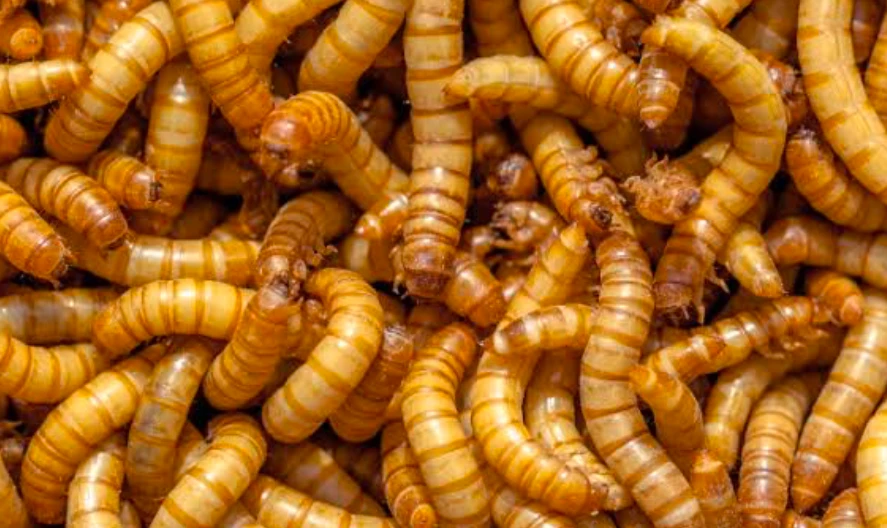
Sternotherus minor species thrive on a protein-rich carnivorous turtle diet with plant supplements. They’ll eat commercial turtle foods, frozen or live invertebrates, and occasional aquatic vegetation. Use this Sternotherus minor feeding guide to give your pets a balanced diet.
Author’s Note: Check out our Complete Guide To Turtle Food: What To Feed And Why It Matters for detailed food recommendations!
Diet Suggestions
These meals are suitable staples for daily feeding in controlled portions.
| Insects | Mealworm, Crickets |
| Aquatic Vegetation | Duckweed, Hornwort, Water Lettuce |
| Pellets | High-quality commercial carnivorous pellets |
| Invertebrate | Shrimp, Snails, Clam |
| Calcium | Cuttlebone, Calcium Powder |
Feeding Frequency
Since juveniles are growing, they need daily food, while adults may eat every other day or 3-4 times weekly.
Author’s Note: If you are struggling with a turtle that just won’t eat check out our post on the 8 Reasons Why Your Turtle Won’t Eat (Tips & Fixes) for causes and fixes.
Calcium Needs
The loggerhead musk turtles’ nutrition needs change with age. They require occasional calcium supplementation for healthy shell development and more carnivorous foods as juveniles. However, as adults, they’ll eat more veggies and less animal matter.
Breeding and Reproductive Behavior in Captivity
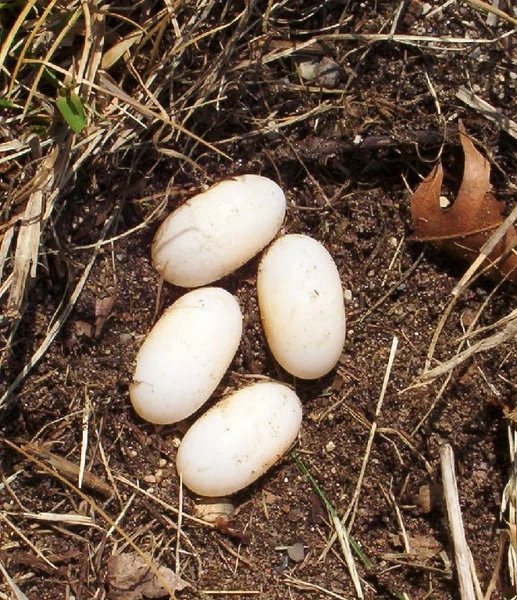
Successfully breeding Loggerhead Musk Turtles depends on your understanding and application of their breeding habits, mating behaviors, and care needs for eggs and hatchlings.
Mating Behavior
They naturally breed in shallow water during summer because the weather is warmer. You can simulate because the weather is warmer. You can simulate this by increasing the temperature in the tank while waiting for the breeding pair to mate.
Egg Laying & Incubation
Prepare a 12-inch deep moist sandu-soil mix nesting box for the female Loggerhead Musk Turtle to lay eggs in. Set the incubator’s temperature based on your preferred sex.
| Male | 80°F |
| Female | 86°F |
| Mixed Sex | 82 – 84°F |
One essential tip for Sternotherus minor egg care is to avoid flipping them during the transfer from the nesting box to the incubator. Mark the top to remember the correct positions for incubating them.
Hatchling Care
Keep your freshwater turtle hatchlings in shallow tanks with warm temperatures. Now is not the time to keep a community, as mature species can become predators and eat the eggs.
Provide a low basking area for easy access to the growing Loggerhead Musk Turtles and watch them for signs of illness.
Health Considerations: Preventing Illness in Loggerhead Musk Turtles
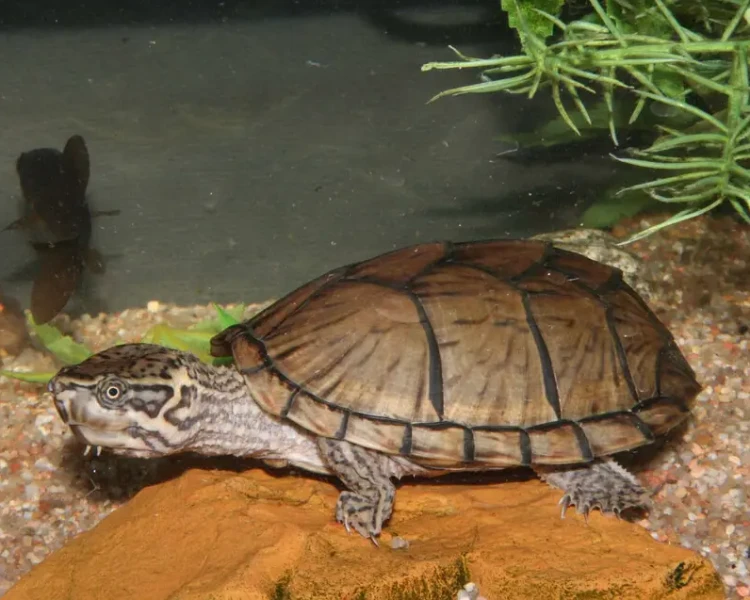
Prepare to tackle common Loggerhead Musk Turtle health problems, such as respiratory infections, soft shells, and fungal growth, using preventative measures and safe treatment protocols.
Preventative Measures
Preventing turtle illness is as simple as following these steps:
- Keep your pet’s living water clean by performing periodic changes of 30% to 40%.
- Give them easy access to the basking area for contact with UVB light.
- Serve them a varied diet to develop their whole bodies and boost their immunity.
- Ensure Sternotherus minor shell care by minimizing handling, providing calcium and UVB light reflection, and building a safe environment.
Treatment Protocols
Healthy treatment protocols start with a quarantine to stop the spread of the disease and guarantee the effective administration of medications. Use first aid, such as changing the water, improving your Loggerhead Musk’s diet, and upgrading their environment.
Also, use antibiotics, antifungal creams, and antibacterial meds where necessary.
How Long Do Loggerhead Musk Turtles Live? Lifespan & Long-Term Care
It’s time to answer one common question: “How long do loggerhead musk turtles live?”
Proper care allows a Sternotherus minor lifespan to extend between 20 to 30 years!
You must provide long-term care for musk turtles if you’re keeping them from their natural habitats. Feed them right, place them in low-stress environments with consistent environmental conditions, and watch them thrive.
Conclusion
Aquarists who want a unique, compact, and manageable pet will love this beginner-friendly small turtle. However, loving them isn’t enough.
If you plan on keeping Sternotherus minor in a tank, you must provide a specific setup with minimal handling and other care essentials.
This Loggerhead Musk Turtle care guide contains every tip you’ll need to achieve success. Scroll up for details, and please comment below if you have any.

